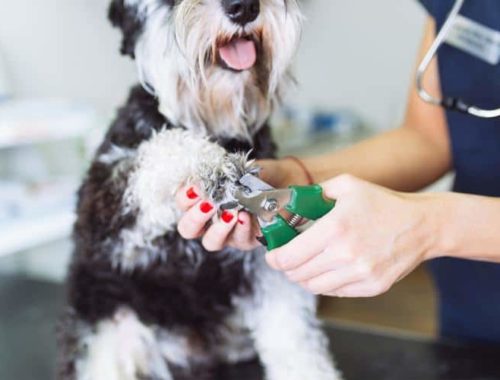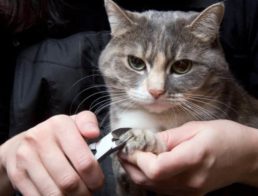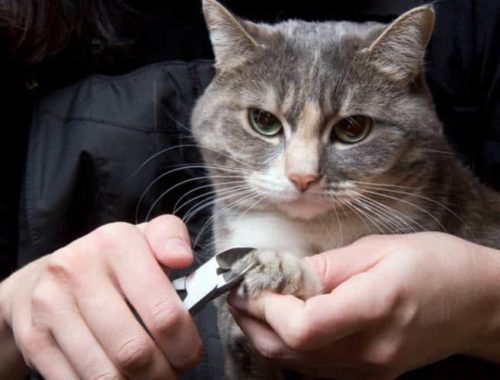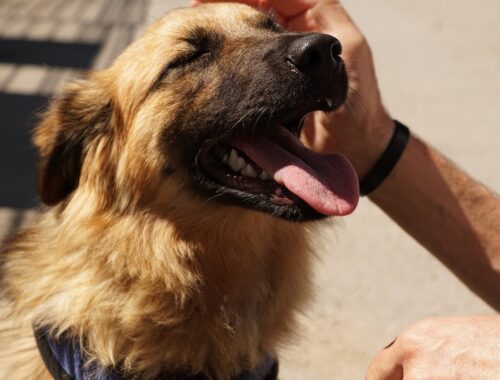Question: My dog has a line on one tooth and the other one is chipped. Is this an emergency?
Hi! I’m on vacation with my dog and noticed a line on his tooth. I think it might be cracked? I called a local vet and they suggested to wait until I get home to take him to his normal vet – as long as he is still eating. I am afraid of not treating it and it’s getting worse! He is still eating and playing just fine. Help! I’m freaking out! And I just noticed his other tooth is chipped ????
–Danielle
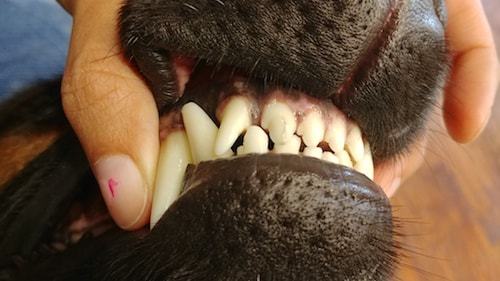
Answer:
Dear Danielle,
First, let me thank you for sending in your question. Dog dental injuries are rampant and sometimes it’s hard to know how much to worry about them.
Cracks and chips in a dog’s teeth are called fractures. Some fractures are nothing to worry about while others can be serious enough to need medical attention.
Types of Dental Fractures in Dogs
Enamel Infraction
Tooth enamel is the hard white surface you see when you look at a normal dog tooth. It protects the underlying living tissues.
An incomplete tooth fracture looks like a crack or a line in the enamel. Enamel infractions don’t involve any vital structures and thus need no treatment.
Enamel Fracture
This is when a fracture causes loss of a piece of the enamel of the tooth. It will look like a chip or a divot on the shiny surface of the tooth. Dogs frequently have small enamel fractures on the tips of their teeth.
Enamel fractures don’t bleed and are not painful. Enamel fractures don’t involve the inner living parts of the tooth. They don’t require treatment except perhaps smoothing of any sharp edges present.
Enamel-Dentin (Uncomplicated) Fracture
A deeper tooth fracture involves the dentin of the tooth. Dentin makes up the bulk of a tooth. It’s a calcified tissue that is sensitive and has living cells within it. Exposed dentin raises the risk of infection.
It can be hard to tell if dentin is exposed just by looking at your dog’s tooth. These fractures don’t bleed but may cause pain. Your vet will be able to tell you if a fracture involves the dentin.
Uncomplicated fractures may benefit from having a sealant or crown applied to protect the dentin. If the tooth is not treated, it may or may not progress to the destruction of the tooth.
Enamel-Dentin-Pulp (Complicated) Fracture
This kind of fracture exposes the tooth pulp which contains blood vessels and nerves. A tooth fracture involving the pulp may bleed and cause pain. Pulp exposure always leads to the death of the tooth and inflammation in the tissue around the tooth root.
A complicated fracture should be treated as soon as possible. The tooth may be extracted or some can be saved with endodontic therapy.
Pulpitis Is Another Common Injury
Pulpitis is another injury you might notice in the mouth of a dog who likes to chew on hard items. A discolored tooth, usually tan, pink or purple, indicates there has been trauma to the tooth. It’s like a bad bruise inside the tooth. The teeth most commonly affected by pulpitis are the upper canine teeth and incisors (the small teeth at the front of the mouth).
Although teeth with pulpitis sometimes revert back to normal, most of the time the injury is permanent and leads to the death of pulp tissue. With dead tissue inside, the tooth is at risk for developing an infection. Veterinary dentists may treat with endodontic therapy or extraction.
Dogs who are 9 years or older may not need treatment for pulpitis if the tooth is stable. Only x-ray imaging will be able to make that determination.
I hope that clears up the confusion over dental injuries in dogs. It’s always a good idea to have your vet check any abnormalities you find in your dog’s mouth. Timely treatment of serious injuries can save your dog a lot of discomfort.
Regards,
TB Thompson, DVM
Disclaimer: Your use of the Ask The Vet feature is subject to the Ask The Vet Terms of Use.
Featured Image Credit: Larysa Shcherbyna, Shutterstock








